
| Cajón de Flores Trek |
Day 1 - Cajón de Paredones (11km - 300m ascent - 280m descent)
|
|
|
 The Rio Blanco |
|
 First glimpse of our trek - Torres de Flores and Pangal |
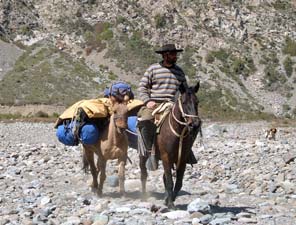 Christian with his horse, Satana, and mule |
|
|
||
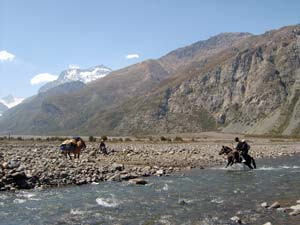 Christian ferrying the trekkers across the Rio Blanco |
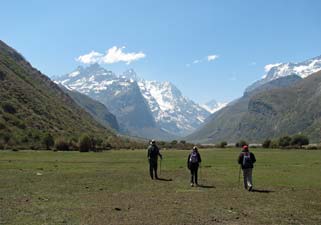 Heading off into the Cajon de Paredones |
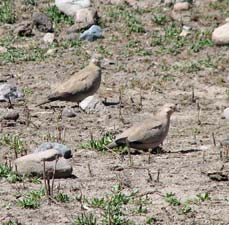 Andean doves |
|
 Paredones waterfall |
|
 View up the stony bed of the Rio Paredones ...... |
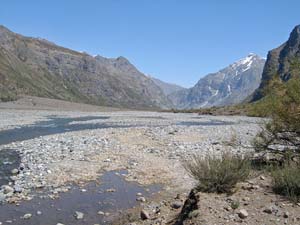 ...... and back down toward the start of the trek |
|
|
||
 Ephemeral waterfalls cascading down the cliffs |
 Waterfall tumbling down from a clifftop gap |
 Heading towards the Torre de Flores |
 The narrow entrance of the Cajon de Flores |
|
 Catedral Barroso (4300m) at the head of the valley |
 First view into the Cajón de Flores |
 |
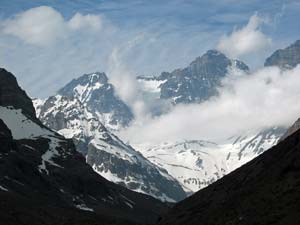 Mountains at the head of the Cajon |
 A scattering of flowering herbs |
|
||
 |
 |
 |
|
 Small snake keen to avoid our company |
|
||
 Close-up of our reptilian friend |
 A handful of tarantula |
 Spot the condors |
|
|
By now, the afternoon clouds had well and truly built up over these peaks and were spilling out down the valley - we retraced our steps back to the camp, where Christian built an impressive bonfire to sit around in the evening and together with a glass of fine Chilean red, warded off the chill mountain air. |
 Now that is a camp fire! |
|
Day 2 - Exploring the Cajón de Flores (660m ascent - 660m descent) |
||
|
 The many braids of the Rio Paredones |
|
 A misty dawn at the Torre de Flores |
 Breakfast time at the campsite |
|
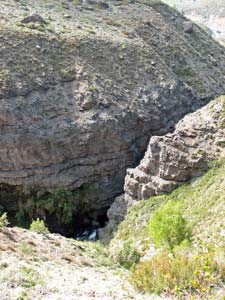 The Estero de Flores flowing into its narrow gorge |
|
|
 Cloud hanging over the Cajón de Flores |
 Can you spot the rare torrent duck? |
|
|
 |
 |
 |
|
|||
 Looking back down the course of Estero Flores |
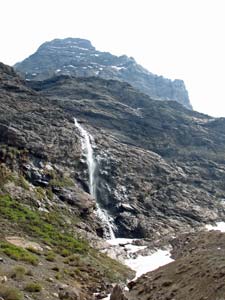 Waterfall cascading from the valley wall |
 Erosion at work - boulder strewn streambed |
 View up to Nevado de Flores |
|
 The solitude of the mountains |
 Nevada de Flores (4950m) at the head of the Cajon |
 Shall we cross here? |
 Heading towards El Gendarme and Nevado de Flores |
|
||
 Arriving at Las Hualtatas |
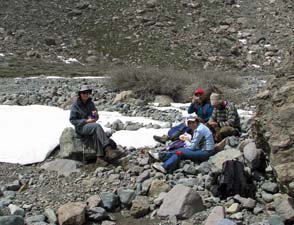 A good spot for lunch |
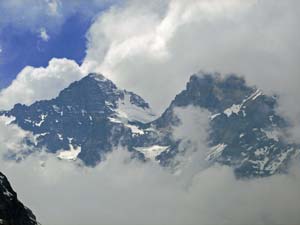 4950m Nevado de Flores in the clouds |
 Juan, Nello and Lisanyell at Las Hualtatas |
 The glacier of Nevado de Flores |
 4500m El Gendarme generating cloud |
|
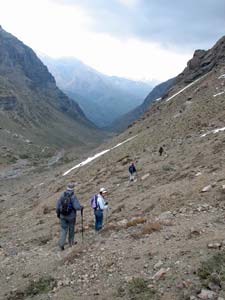 The barren upper slopes of the Cajon |
|
 Working our way across the snowdrifts ... |
 .... back toward the mouth of the Cajon |
|
Day 3 - The Waterfall (8km - 10m ascent - 30m descent) |
|
||
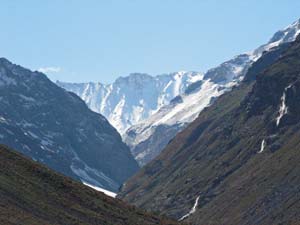 The head of Cajon Paredones |
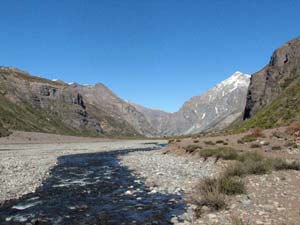 Looking down the Rio Paredones |
 The towering black face of Torre de Flores |
 Looking across the river flats towards the Paredones Falls |
 4300m Catedral Barroso on the Chile-Argentina border |
Reaching a point opposite the large waterfall, Christian's services were called on again, as he ferried us on Satana's back across the three deeper braids of the Rio Paredones. We then rock-hopped across the remaining four braids to the southern edge of the stony riverbed, and headed toward the impressive 150m waterfall. |
 The handsome Chilean cowboy reached down and lifted her onto his snorting black steed then galloped off into the sunset (well, any girl can dream!) |
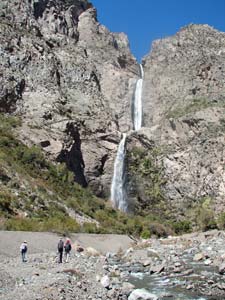 Heading toward the 150m Paredones Falls |
 Stream below the waterfall |
 The trekking team pose for a photo |
 The last 50m plunge |
|
|||
 Landscape of the Central Chilean Andes |
 Heading home on the stony river bed |
 One last crossing |
|
 100-year old wooden aqueduct bound by iron hoops |
 Parque Nacional Rio Cipres |
|
||
|